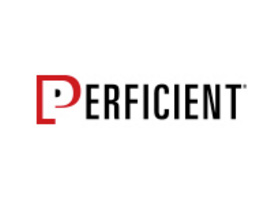Once you’ve invested the time and effort into creating really solid, well documented data models, it would be really great to let some folks know about it, right!?!? If you’re using PowerDesigner, you’ve got a few options: Use the included (in some editions) web repository. This requires the use of the model repository and displays […]
Posts Tagged ‘Cross-Functional BI’
PowerDesigner Tips – Mappings in the Model
We’re constantly looking for ways to streamline the BI development process. Data mapping (source to target) can be a complex and cumbersome process due to: Ongoing model changes – the target moves! Poor (or “loose”) communication between those mapping and the development team. Lack of consistency in collecting and documenting mappings (Excel, I’m looking at […]
PowerDesigner Tips – Column Ordering
In our standards XEM file (extended model definition), I’ve added column ordering functionality by categorizing each column and then ordering the categories. Column groups are defined in a BaseColumn template. We have: PRIM,0,%Primary% ROWMETA,3,%extIsRowDateMeta% META,4,%extIsMetaColumn% AKNONMETA,1,%AllKeys% BASE,2,TRUE
Setting Expectations for Limited Data Governance
Setting up a new data governance program means bringing deep change to the operating culture of an organization. As a result, getting traction for an enterprise scale effort may not always be the pragmatic route. Sometimes its better to be small and excellent here and let the enterprise adopt governance organically. Limited Data Governance The […]
Iterative BI + Gradle Tips and Tricks: Building a Custom Plugin
To build a custom plugin in groovy, do this. I know this seems redundant, but it wasn’t as clear as it should have been. 1. Create a project directory. Just a plain ol’ directory. Wherever you like. 2. Add the source file subdirectories: src\main\groovy\… (with the package path you’d like to use. We have src\main\groovy\com\perficient\gradle) […]
Iterative BI + Gradle Tips and Tricks – Plugins
Quick tip of the day: Use Gradle plugins to package up functionality for easy reuse. For example, we developed a simple “database” plugin to handle the common tasks associated with building and upgrading a database. Things like: build – create a new database from scratch. Runs the CREATE DATABASE and sqlcmd’s the full DDL upgrade […]
Iterative BI + Gradle Tips and Tricks: A Primer on Gradle Objects
While the Gradle manual is extensive, since we’re not building an executable or the like from source code, many of the concepts are a little opaque. Here’s a quick primer on Gradle for BI: Gradle is “project” based, with each project containing a set of inter-dependent tasks which in turn contain actions: The whole thing […]
Iterative BI – Building with Gradle
We’ve chosen Gradle as our build system for our iterative BI environment. It’s a powerful tool, but there’s a bunch of awesomeness in there. Gradle uses Groovy as its scripting language. Groovy is just plain great. You get the power of the Java platform in a scripting language and can do things like this: def […]
My BI Dream Team
I often am asked by clients to evaluate the configuration of a BI delivery team and point out any changes that seem prudent. Usually this is pretty straightforward, but over the years there’s some not-so-obvious roles I’ve come across that would make the cut on my dream team. So, without duplicating the many, many “roles […]
Dynamic BI – Connecting Design to Code
I’m always striving to lower the wall between design and implementation. In BI, this means taking as much of the data architect and business analyst’s work and applying it directly to the data management process (without the developer or administrator middlemen). Here’s some opportunities: Model builds – Your modeling tool should be able to produce […]
BI Tools – Testing with DBFit
During work on our in-house lightweight metadata repository (MDR), I’ve started to use DBFit for database acceptance testing and have been pleasantly surprised at the simplicity of the tool and its ability to deliver on its promise of low entry cost testing. DBFit is a part of FitNesse, itself an implementation of the FIT acceptance […]
Iterative BI – What’s the Difference?
Recently I was in a conversation where a PM declared “Agile’s just waterfall really fast – we can do that no problem!” Uh oh. Like (most) everything, delivery methodologies are subject to fashion and trend, and Agile/Scrum/Kanban and the like are en vouge. Collective, I’ll refer to these highly cyclic methodologies as “iterative” or (little […]
